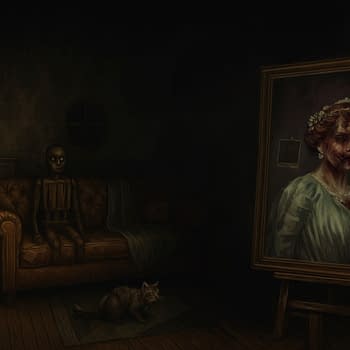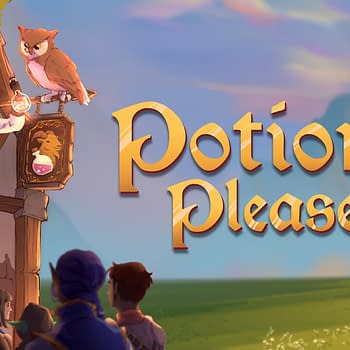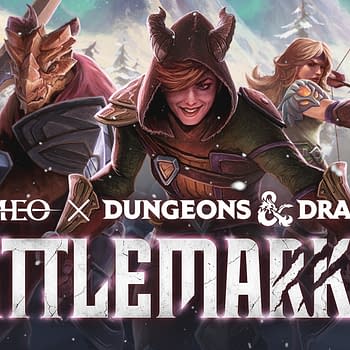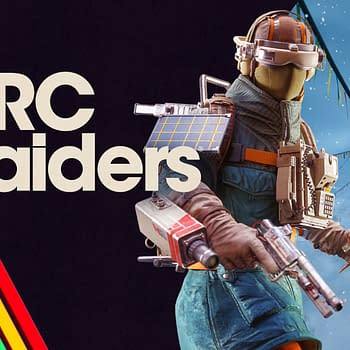Posted in: Board Games, Games, Review | Tagged: back to the future, Back To The Future: Outatime, game review, idw games, Outatime
Gotta Go Back In Time: We Review 'Back To The Future: Outatime'
I'm a sucker for Back To The Future anything. It's one of those film franchises that will live with me forever, no matter how dated it becomes or if someone manages to make a new time traveling trilogy. So whenever anything comes around with the branding of that film, I have to check it out just for the hell of it. IDW Games recently sent me a copy of Back To The Future: Outatime for review, so I took this can over to Watchtower Cafe in SLC and played a few rounds with my friends Adam and Cassidy.
Back To The Future: Outatime is a dice game that works under some of the same principals as Yahtzee, but with a few different twists. The game sets up the premise that you are trying to build up the 1.21 gigawatts to power the DeLorean and get back to the future. You will get four cards to play with: A 0.4 card, two 0.3 cards, one 0.2 card, and one 0.01 card (adding up to 1.21). Each one in the deck and the subsequent counterparts all have random dice at the top that you need to roll.
You have six opaque dice that have the number 2, 3, 4, and 5 on them, as well as the number 88 and a symbol for the flux capacitor. Like Yahtzee, you will roll these dice you gain the numbers you need on your card. Using the examples above and below, the first number is a 3, which we rolled and can progress further on the card. The second number is a 2, which we got, but the third number is a 5, which we need to reroll the second 3 in order to pick up that number.
You'll use this DeLorean card below to track your progress. All Flux dice rolls are locked and cannot be used again. 88 rolls you can choose to keep or re-roll if you wish. You stop rolling if you fail to pick up the next number with whatever dice you have. If you manage to score two Flux and two 88 dice, you can use it to push yourself forward one number and another player back one.
If you manage to get three of each, you can go ahead two numbers and everyone goes back two. On top of all this, if you roll a number someone else needs at the same time (let's say you both need a 4 next), they can take that successful dice roll as a "ripple effect" to help themselves get further. A lot of the game relies on a strategy of both getting lucky rolls and paying attention to what your opponents are doing at all times. If you play it correctly, there are moments where you will clear a card and never roll any dice for it, simply because your opponents did the work for you.
The last card of the game, the 0.01 card, is the hardest to complete as you can't use any of your opponent's dice rolls for the ripple effect and must accomplish this feat on your own. If you manage to get all the cards and their dice successfully, you win the game. Because the ripple effect is such a potent weapon to stay on top of, games go by quickly and you can play a round in 10-15 minutes, depending on how well you do. But when you start playing with individuals who are aiming for all Flux and 88 rolls, the game can become challenging and super ccompetitive
I really enjoyed Back To The Future: Outatime as it reminded me that you don't really need a ton of gear to have a fun time. When you look at it, the game is just 60 cards, six dice, some rules and a can to roll them in. Quick fun with easy to understand rules with a BTTF theme attached to it so you can quote the film to each other in the process. Great, Scott! This is a game I can recommend to anyone and everyone! This is heavy.


















